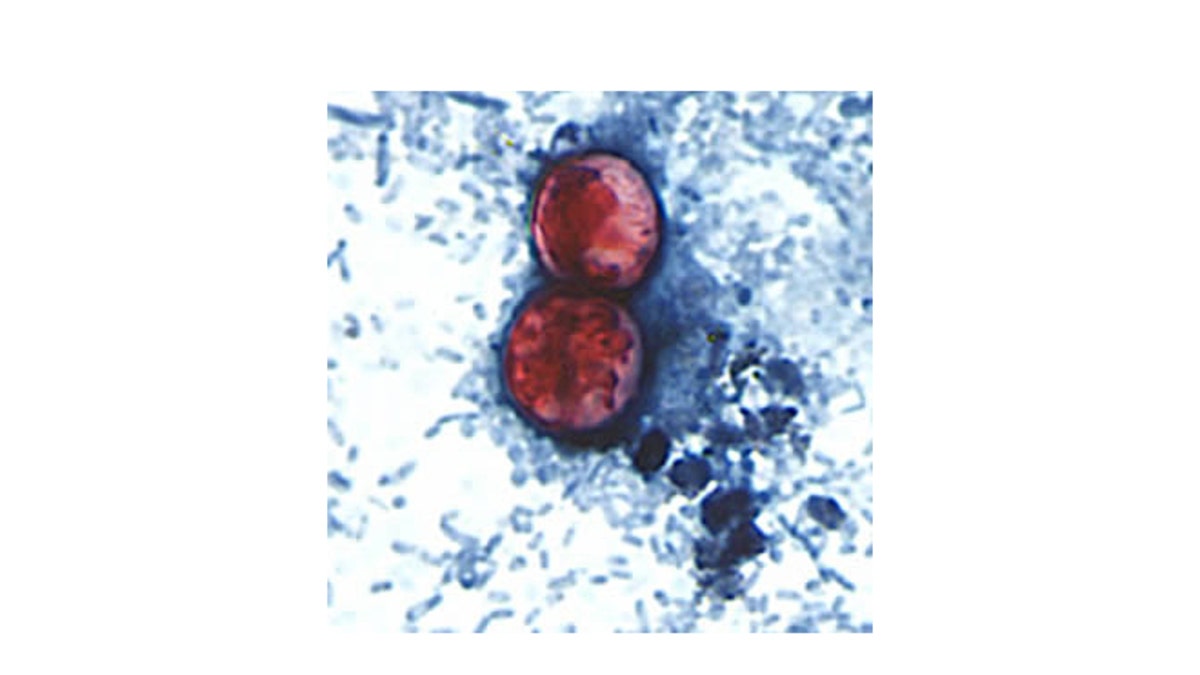
A pair of oocysts of Cyclospora cayetanensis stained with safranin. (CDC)
At least 81 people in Iowa, 53 people in Nebraska and an unknown number of people in neighboring states have been sickened by an outbreak of cyclospora, Food Safety News reported.
Cyclospora is most commonly contracted by eating food or drinking water contaminated with human or animal feces containing the cyclospora parasite. Since the parasite takes days – or even weeks, to become infectious – it is not passed directly from person to person.
Symptoms of cyclosporiasis include watery diarrhea, loss of appetite, weight loss, stomach cramps, nausea, body aches and fatigue. If untreated, it can cause frequent, sometimes explosive, bowel movements that lasts an average of 57 days.
Investigators are still attempting to identify the source of the outbreak, though they suspect the parasite was transmitted through a raw vegetable product. Outbreaks began in early June but stopped occurring past mid-June. Researchers believe that the product at the root of the outbreak came from a widely distributed shipment of produce that is likely no longer on the market.
“There are still several vegetables we’re investigating,” Patricia Quinlisk, an epidemiologist for the Iowa Department of Public Health, said. “We’re looking for something that could have exposed people in a multitude of settings, so we’re doing a lot of food traceback. Whatever it was, it’s not still on the market in Iowa.”
Previous outbreaks of cyclospora have been linked to imports of produce such as raspberries, basil, snow peas and mesclun lettuce.
A spokeswoman for the Centers for Disease Control and Prevention said they are aware of the outbreak and are working with state officials on investigating the source, according to an email sent to Food Safety News.
In Texas, an additional 37 people have been sickened by cyclospora, and infections have been discovered in Wisconsin and Illinois as well. However, investigators are still working to determine whether these cases are linked to the outbreaks in Nebraska and Iowa, or if they are isolated incidences.
